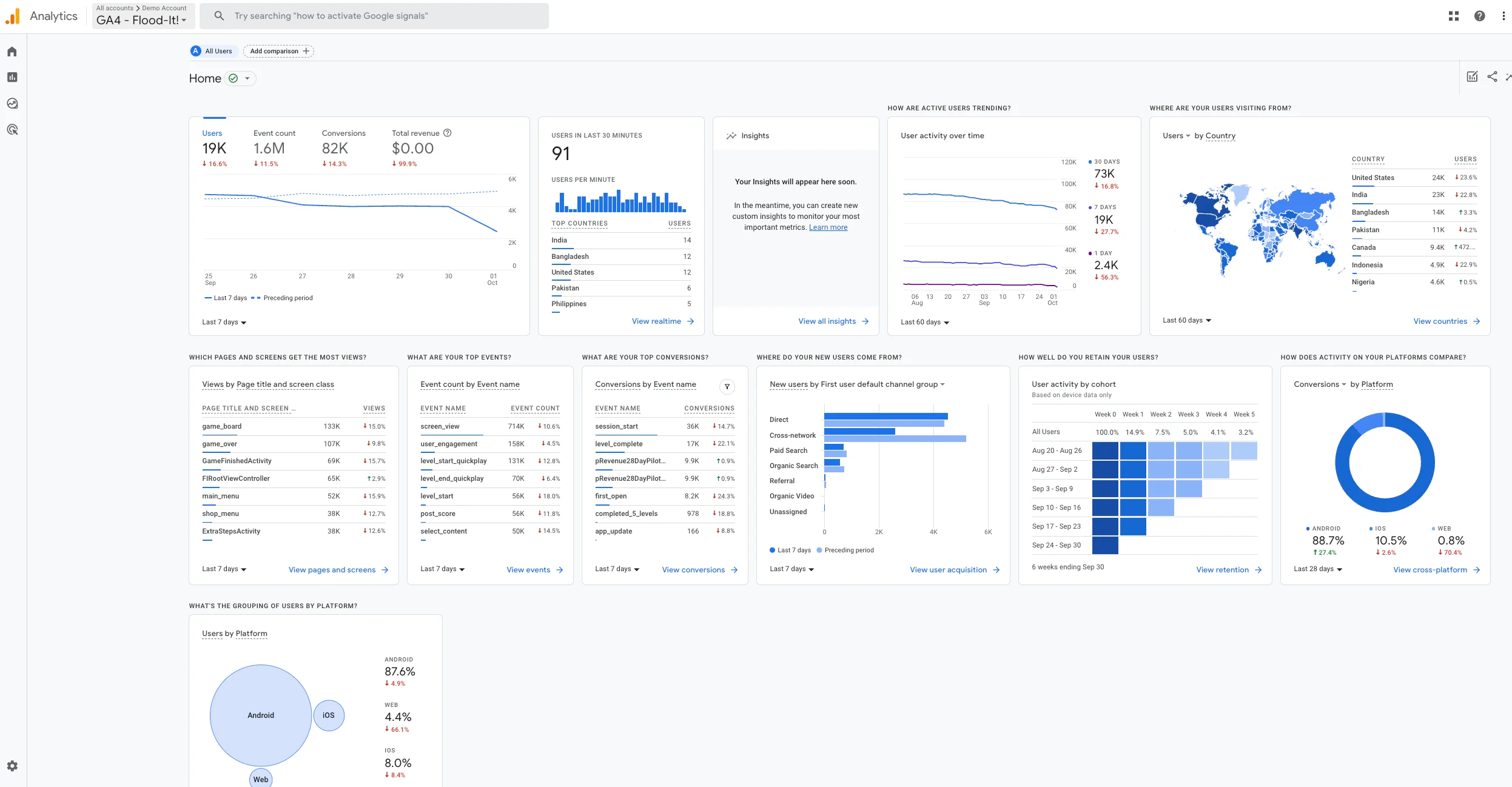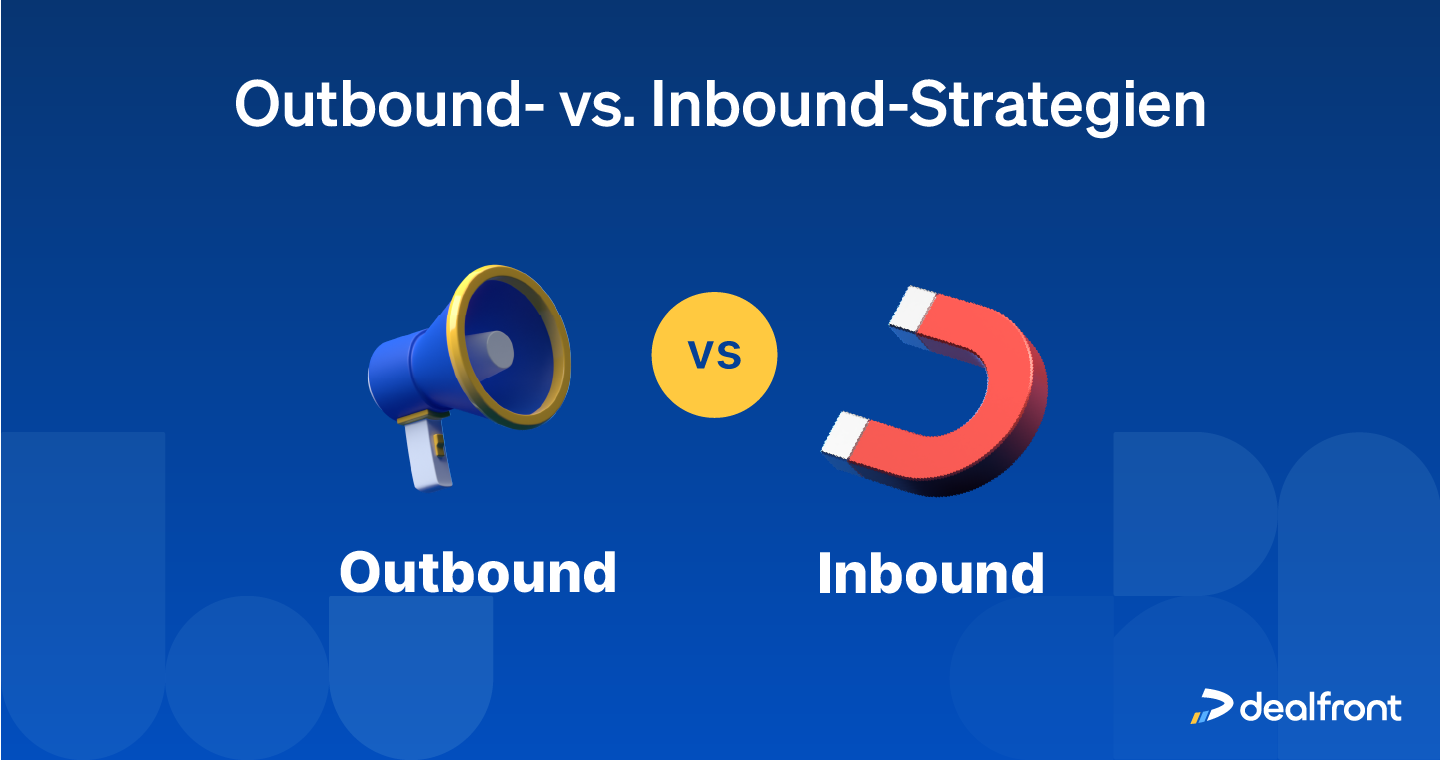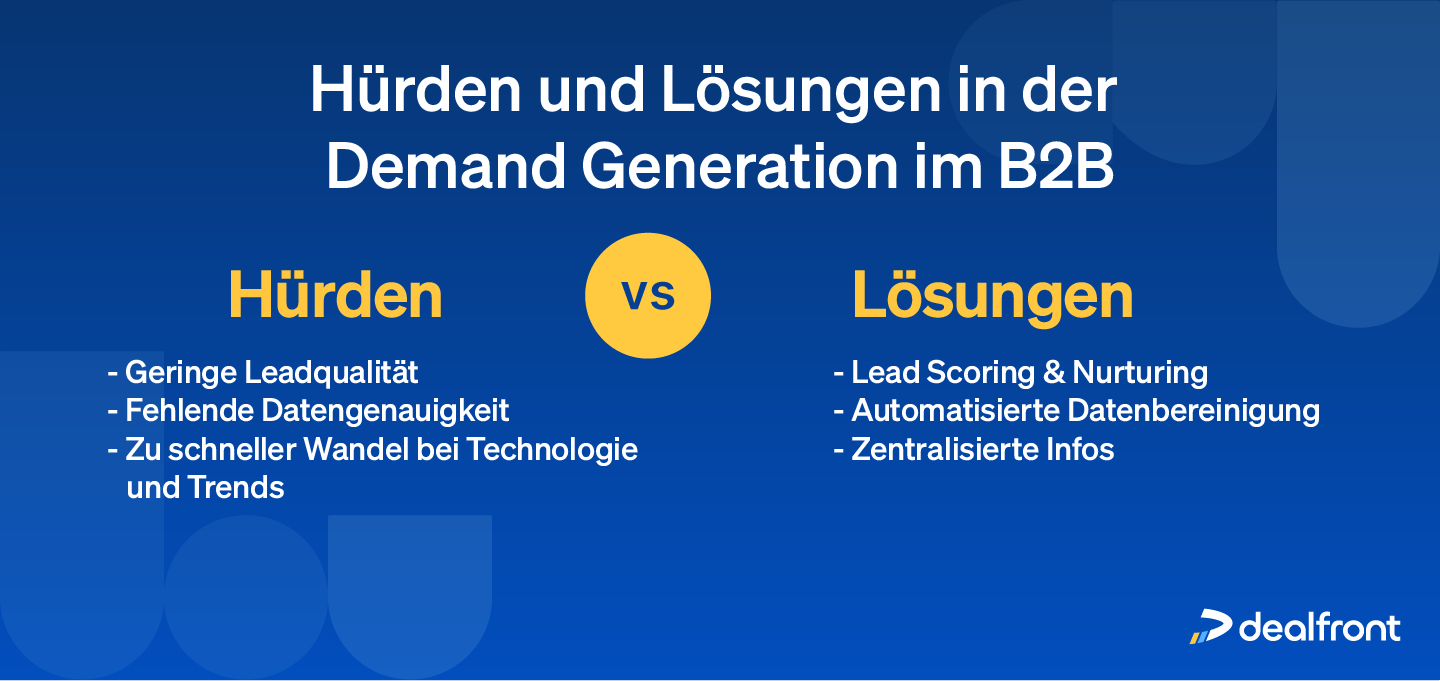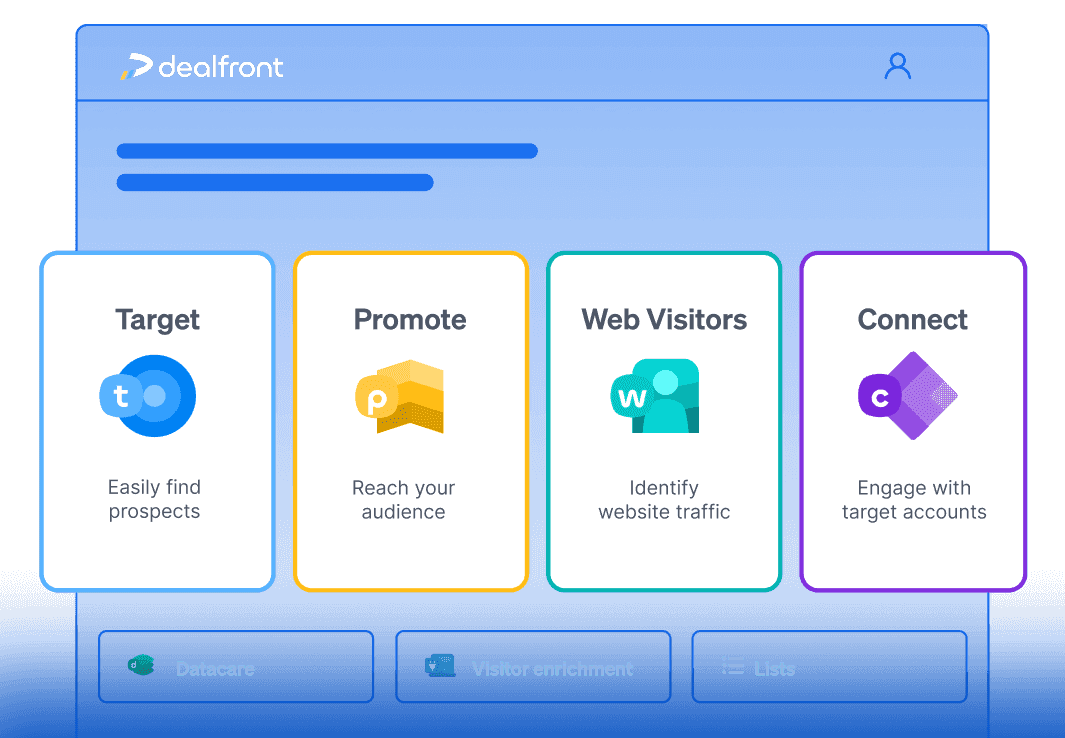You've launched your business into the vast digital sea, aware of the abundance of potential customers. But how do you stand out amid fierce competition? The key is a strategy that not only guides your course but also steers your brand toward success. So, what is demand generation marketing?
Demand generation is a marketing strategy that cultivates awareness and interest in your company's offerings, often emphasizing educational content. Today, we're delving into crucial aspects of successful demand generation, beginning with its distinction from lead generation. We’ll then go on to explore:
Crafting targeted content that resonates with your ideal customers
Distributing this content across various channels
Evaluating your effectiveness
By the end of this article, you'll understand the importance of employing demand generation in your sales and marketing endeavors. But, before delving further, let's begin with a definition of demand generation.

Defining the demand generation process
Demand generation is the process of creating attention for and interest in your brand. This can include various marketing activities, such as content, webinars, events, ads, and more. The goal is to introduce potential customers to your brand so you can later nurture them into leads and turn them into customers.
Demand generation is the top of the B2B marketing funnel where you cast a wide net—the first step in converting prospects into loyal customers.
What is the difference between demand gen marketing and lead generation?
Let’s compare demand gen vs lead gen. Demand generation is different from lead generation and other marketing strategies. Lead generation is the process of building desire for your product in your target audience. It focuses on getting contact information for your leads, nurturing those leads, and converting them into customers.
“B2B demand generation is like the friendly handshake that introduces your business to the world. Lead generation is the one-to-one meeting that follows.”
Daire Summerville, Director of Growth & Product Marketing @Dealfront
In today's GDPR-compliant world, demand generation isn’t just about casting a wide net. It's about doing it correctly, respecting data privacy, and effectively reaching your target audience. Then, you nurture that demand and guide it through the marketing funnel until it becomes a loyal customer. This is key to building a winning marketing strategy that brings the European market to your doorstep.
Why is demand generation important?
Demand generation is a form of inbound marketing to foster brand awareness and service recognition. But its value goes beyond just awareness building. Robust demand gen strategies can instill credibility in your brand, potentially elevating its reputation. So, essentially, it's reputation-building at a marketing level. In B2B marketing, establishing brand trustworthiness is crucial.
From a business perspective, demand generation is the initial step toward transitioning into lead generation, prompting more concrete customer actions. As customers increasingly engage with your brand and its offerings, the opportunities that come about during the demand generation phase gain traction, reinforcing their potential.
The components of demand gen marketing
Let’s look at the components of demand generation to see how it works in practice. You can boil down successful demand generation into four essential parts:
Target audience
Content creation
Multi-channel marketing
Lead nurturing
Identifying your target audience
Defining your ICP is the foundation of effective demand generation. Your ICP is a detailed description of your ideal customer—who would benefit most from your products and services. Without a well-defined ICP, you’re likely to waste time and money trying to build interest in your company—in an audience that doesn’t want or need what you offer.
With a well-defined ICP, you can create targeted, efficient marketing campaigns. Steps to building your ICP include:
Market Research: Conduct in-depth research to understand your industry and market dynamics.
Customer Segmentation: Identify common characteristics among your current customers.
Client Analysis: Examine your most profitable and satisfied clients to pinpoint shared traits.
Firmographic Criteria: Consider factors like company size, industry, location, and revenue.
Technographic Data: Assess the technology stack your ideal clients use.
Pain Points: Identify the challenges your product or service solves for them.
Competitive Landscape: Evaluate who your competitors are targeting and where gaps exist.
List Building: Use compliant B2B data to build lists of companies that match your ICP and get contact information for key decision-makers.
Next, you’ll want to create detailed buyer personas, the individual decision-makers within your target companies. Buyer personas breathe life into your ICP.
For example, you're selling B2B software solutions in Europe. Your ICP might consist of mid-sized European companies in the logistics sector. But within these companies, you'll encounter various roles, such as IT managers, CTOs, or procurement officers. Each of these personas has unique pain points, motivations, and challenges.
Create detailed buyer personas for these roles to tailor your marketing messages, content, and strategies to resonate with them personally. Follow these steps to build your buyer personas:

Content creation and marketing strategy
Valuable, relevant content makes your target audience feel that you thoroughly understand their pain points and what they need. Content marketing delivers 3x more leads than outbound lead generation strategies.
Create content that speaks directly to their pain points in clear, accessible language. For example, what if your buyer persona is a tech recruiter who has to spend hours every day wading through resumes and weeding out unqualified candidates? You could create content that discusses how to use artificial intelligence (AI) and automation in the recruitment process, including chatbot interviews.
Once you've crafted compelling content, the next step is distribution. Your distribution strategy should align with where your target audience spends their time online.
Multi-channel marketing
One thing that sets successful B2B marketing strategies apart is an omnichannel approach. The cohesive orchestration of these channels creates a consistent and seamless customer journey. An omnichannel strategy recognizes that your audience may interact with your brand through various touchpoints. And provides a unified and coherent experience across all of them.
Some ideas for distribution channels include:

One thing that sets successful B2B marketing strategies apart is an omnichannel approach. The cohesive orchestration of these channels creates a consistent and seamless customer journey. An omnichannel strategy recognizes that your audience may interact with your brand through various touchpoints. And provides a unified and coherent experience across all of them.
Lead nurturing
To nurture leads, prioritize personalized communication, active listening, and consistently delivering value to your audience. One powerful tool for nurturing these relationships is marketing automation. It enables businesses to streamline and personalize their interactions with leads at scale.
With marketing automation, you can send targeted emails, provide relevant content, and track lead behavior to tailor your messaging. This saves time and ensures that your leads receive the right message at the right time, making the most of your demand-generation strategies.
Demand generation strategy
Let’s look at some of the fundamentals of different B2B demand generation tactics and strategies. You can broadly split demand generation into inbound and outbound strategies, and account-based marketing is a powerful strategy you don’t want to overlook.
Demand gen tactics
1. Inbound vs. outbound strategies

An inbound demand generation strategy focuses on creating valuable and relevant content that draws prospects to your brand naturally. It positions your business as a thought leader and addresses the pain points of your target audience through blog posts, ebooks, webinars, and social media. You make your website findable through search engine optimization (SEO) and use content marketing to attract organic traffic and nurture leads through their buying journey.
Inbound is like a magnet, pulling in prospects who are genuinely interested in your offerings.
By contrast, outbound demand generation involves directly reaching out to potential customers. This includes strategies like cold calling, email marketing, and targeted advertising. Outbound is proactive, as it initiates contact with prospects who may not be familiar with your brand. It identifies and pursues potential leads through various outreach methods like personalized emails or social media advertising.
Outbound is like fishing, casting your line into a stream where you know your ideal buyers are.
2. SEO and SEM in demand generation
Organic demand-generation strategies are non-paid methods like content creation and SEO to attract and engage with an audience naturally. Paid strategies involve allocating a budget for advertising and promotional efforts, including pay-per-click campaigns and sponsored content.
Organic efforts, like compelling content and SEO, lay a strong foundation by naturally attracting interested prospects. Simultaneously, paid strategies, such as targeted advertising, extend your reach to potential clients who may not have discovered your brand otherwise. Ideally, you use both methods simultaneously.
SEO best practices include:
Performing thorough keyword research to understand your target audience’s search behavior.
Creating high-quality, relevant content that aligns with your chosen keywords.
Optimizing on-page elements, including title tags, meta descriptions, and headers, with your target keywords.
Ensuring your website is mobile-friendly and fast-loading for a better user experience.
Building a network of high-quality backlinks from reputable websites in your industry.
Update and refresh your content regularly to maintain relevance and improve rankings.
Using schema markup to provide search engines with structured data about your content.
Focusing on user engagement metrics like bounce rate and pageviews.
Staying up-to-date with SEO trends and algorithm updates to adapt your strategy accordingly.
3. Social media and community building
Using social platforms for demand generation marketing is a low-cost (often free) way to connect with your target audience, share valuable content, and build brand recognition. Use platforms like LinkedIn, X, and Facebook to create a steady stream of organic traffic and engage potential clients.
For example, you can set up an AI chatbot in your social media DMs to nurture leads and ensure you don’t lose opportunities. You can also practice social listening, monitoring social media for mentions of your brand or industry to see what people discuss. Another idea is sharing your own content on social media and commenting on the content your leads have shared.
Another compelling approach is building online communities to foster engagement. These communities provide a dedicated space for your audience to interact, ask questions, and share insights related to your industry. Platforms like Slack, Reddit, or even a private forum on your website can serve as hubs for meaningful discussions and relationship-building.

Cultivating these communities can help establish your brand as a trusted authority and facilitate word-of-mouth referrals.
4. Account-based marketing (ABM)
ABM is a highly targeted marketing approach that aligns perfectly with demand generation. Instead of casting a wide net to capture leads, ABM focuses on identifying and nurturing relationships with specific high-value accounts or businesses that are an ideal fit for your product or service.
ABM aligns with demand generation by ensuring that the efforts to generate demand concentrate on the most promising prospects. It emphasizes personalization, tailoring content and messaging to resonate with individual accounts. Thus, increasing the chances of conversion. RollsWorks found that 68% of small and medium-sized businesses achieved shorter sales cycles with ABM.
One company's ABM campaign generated a 41% close rate for the company. It accomplished this by serving ads to an account as soon as a sales development representative (SDR) began working on that account. Each SDR had a personalized landing page with the SDR's photo and a personal message.
After a prospect visited the landing page, they received matching retargeting ads, so the prospect saw the SDR everywhere. Clicking the ad took the prospect to a personalized landing page to book a call. After a call, if a prospect had stalled for 35 days, the company sent them physical direct mail to push them over the finish line.
Demand generation examples
Here’s a basic example of demand generation. A B2B tech company may conduct educational webinars and release blogs addressing industry challenges, highlighting their solutions and expertise.
Additionally, they might utilize paid advertising, such as Google PPC ads and targeted social media campaigns, to broaden the reach of their content. This fusion of content marketing and paid media is a potent demand generation strategy, drawing in and nurturing leads effectively.
Let's focus on three demand gen examples to clarify the process and deepen your understanding.
1. ProfitWell
ProfitWell hosts the weekly series Pricing Page Teardown, dissecting strategies of both established and emerging SaaS companies. While each episode offers a CTA for viewers to join a notification list for new content, it's optional, allowing immediate access.
What stands out is the exceptional quality of ProfitWell's content. Each episode is packed with valuable insights tailored to ProfitWell's audience, aimed at educating and enriching their business endeavors.
2. Godrej Properties
Godrej Properties, the real estate branch of the Godrej Group, operates in more than 12 cities in India. To enhance the efficiency of their digital campaigns and garner high-quality leads, they aimed to stimulate interest among potential buyers for their upcoming project launch in Central Noida.
With the Godrej Properties and Madison Digital teams, Amazon Ads identified relevant audience segments based on purchase tendencies, demographics, location, and shopping behavior. This involved targeting consumers interested in premium brands' electronics, appliances, fashion accessories, and auto and travel accessories.
The campaign yielded a 14% decrease in cost per lead (CPL) and a 31% reduction in the ratio of non-contactable leads compared to previous Amazon Ads campaigns, demonstrating its success in achieving the set objectives.
3. SPDLoad
SpdLoad, an app development company, primarily targets startup founders interested in building apps or SaaS products.
To cater to their buyer persona, SpdLoad offers resources tailored to their needs, such as the "Salary Calculator," a useful tool for estimating startup company salary expenses. This demonstrates SpdLoad's deep understanding of their target customers and commitment to meeting their needs.
The tool is accessible without requiring an email, allowing every startup founder to derive value from it. This serves as another testament to the power of demand generation when aligned with a clear understanding of the target market.
Demand generation metrics and tools: Measuring and analyzing your success
Now that you have some ideas for demand generation, how do you measure your campaigns? Analyzing your demand gen campaigns will help you see which are effective and where you need to make improvements. First, you’ll need the right metrics to track.
Key performance indicators (KPIs) for demand generation
Key performance indicators (KPIs) for demand generation are vital in gauging the effectiveness of your B2B marketing efforts. Metrics like marketing qualified leads track the number of prospects showing genuine interest in your offerings.
Sales-qualified leads are leads the sales team has qualified as having a high level of interest in your product or service. A sales conversion rate is the percentage of prospects who bought your offer after interacting with the sales pitch.
Other crucial KPIs include cost per acquisition, which evaluates the efficiency of your marketing spend. And customer lifetime value, assessing the long-term value generated from demand generation efforts.
The role of marketing analytics tools
Marketing teams can use tools like Google Analytics, customer relationship management (CRM) systems, and marketing automation platforms to get greater campaign returns.
Google Analytics provides valuable insights into website traffic, user behavior, and conversion rates. Marketers can use this data to identify high-performing content, understand audience demographics, and refine their digital marketing efforts accordingly.
CRM systems allow teams to manage customer relationships effectively. They provide a centralized customer information database, enabling personalized communication and targeted marketing campaigns. This fosters better customer relationships and helps identify upsell and cross-sell opportunities.
Marketing automation platforms streamline repetitive tasks, such as email marketing and lead nurturing, freeing time for strategic planning. These enable personalized and timely communication with leads and customers to increase engagement and conversion rates.
Integrate these demand-generation tools into your marketing efforts to get the most possible out of your marketing campaigns.
Continuous optimization
Data-based strategies use data and analytics to make informed decisions at every stage of the customer journey. A/B testing and iteration play a pivotal role in this process.
A/B testing involves creating two or more versions of a marketing asset—such as an email or landing page—and comparing their performance to determine which resonates better with the audience. This iterative approach allows marketers to continually refine their strategies, optimizing for higher conversion rates, better engagement, and increased return on investment (ROI).
What does a demand generation agency do?
A demand generation agency specializes in crafting and executing strategies to amplify interest in a company's products or services. This approach differs from the traditional focus of marketing agencies, which emphasize product promotion.
A primary objective of such agencies is to cultivate and convert qualified leads into customers. This entails identifying potential customers through B2B customer profiles, educating them about the company's offerings, and ultimately prompting purchase decisions.
To accomplish this, demand generation agencies leverage tactics like targeted advertising, content marketing, social media engagement, and email campaigns. They meticulously track and analyze data to gauge the efficacy of their initiatives.
However, even with the best agency, KPIs, tools, and testing, you’ll inevitably encounter challenges.
Common B2B demand generation challenges
B2B demand generation comes with challenges that marketers need to navigate effectively to achieve success.
What are the challenges?
Generating high-quality leads is an evergreen challenge in B2B sales and marketing. Many businesses struggle to attract prospects who are genuinely interested in their offerings. It's crucial to align marketing efforts with a well-defined ICP and create content that speaks to the specific needs and pain points of this audience.
Another common challenge is data accuracy. As databases grow, data can become outdated or inaccurate, leading to wasted efforts on irrelevant leads. Regularly cleansing and updating data ensures marketing campaigns reach the right audience.
Lastly, adapting to evolving tech and trends is an ongoing challenge. Staying current involves regularly evaluating and adopting new tools and tactics. Examples include AI-powered marketing automation and embracing emerging social media platforms to stay competitive.

Demand gen best practices and solutions
Some key best practices in the face of these challenges are improving lead quality, following data-management best practices, and staying up-to-date with industry changes.
To improve lead quality, implement lead scoring and nurturing processes to focus your attention on prospects showing genuine interest and ensure valuable resources go to high-potential leads. Datacare plays a crucial role here, enhancing data quality within CRM systems to pinpoint the most promising leads accurately.
Effective data management involves following best practices like regular data cleansing and updating to keep contact information accurate and relevant.
Finally, stay updated with industry changes by reading industry-specific news websites, magazines, and newsletters. You can also join industry forums and participate in discussions there, as well as attend conferences and trade shows.
These solutions will help your demand-generation strategy stay sharp and growth-oriented.
Top tips for better demand generation campaigns
Demand generation covers such a broad spectrum of activities that there's no universal approach. However, here are three pointers for effective demand generation campaigns:
Understand your audience: Develop an Ideal Customer Profile (ICP) as your guiding principle. Keep it tightly focused to tailor your message to their specific pain points.
Monitor everything: Track as much data as possible and assess your outcomes. Emphasize successful strategies and discard ineffective ones. Utilize technology for demand generation analytics.
Optimize your website: Your website serves as the initial destination for your ICP after engaging with your content. Ensure it presents you and your brand in the best possible manner.
Demand generation for growth
So, we’ve dived into the fundamentals of sparking interest and desire for your products and services in our look at demand generation. We began by identifying your target audience, crafting resonant personas, and ensuring alignment with their needs. We also discussed distribution strategies to maximize visibility among your audience. Additionally, we emphasized the importance of nurturing leads generated through demand generation efforts.
Demand generation campaigns are crucial. They enable you to target the right audience, cultivate relationships, and deliver valuable solutions. Moreover, they aid in lead acquisition and establishing a robust customer base that sustains revenue growth.
Book a demo with Dealfront, the go-to-market platform for Europe, and discover how we can help you win any European market.







